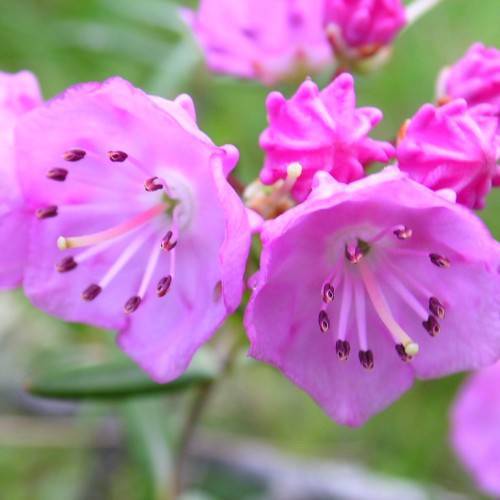
Bog Laurel
Kalmia polifolia
Cycle:
Perennial
Watering:
Average
Hardiness Zone:
Sun:
part shade,filtered shade
Soil:
Loamy,Humus
Leaf:
Yes
Growth Rate:
Low
Poisonous To Humans:
Yes
Poisonous To Pets:
Yes
Thorny:
Yes
Care Level:
Medium
watering
When it comes to caring for a Bog Laurel (Kalmia polifolia), watering is a key factor for its health and vigor. Generally, this shrub requires relatively frequent, light watering throughout the growing season. During periods of dry weather, you should water the Bog Laurel once or twice a week, depending on the weather and your soil type. Water until the soil is thoroughly soaked and water is running out the bottom of the pot or container. To encourage growth and blooms, give the Bog Laurel an additional deep soaking every 3-4 weeks. During the winter months, the Bog Laurel should only be watered if the soil has dried out completely.
sunlight
Bog Laurel thrives best in partial shade, meaning it should receive no more than 4–6 hours of direct sunlight each day. The best time to expose it to this much sunlight is when the sun rises and sets, as the levels are at their lowest and less likely to damage the plant. Avoid exposing the plant to intense afternoon sunlight, as this can easily burn it. When possible, shield the plant from intense afternoon sun using structures like trees, walls and fences.
pruning
Bog Laurel is generally considered to be a low-maintenance shrub. However, regular pruning can help to encourage a bushy, robust plant with an abundance of beautiful blooms. Pruning should be done in late winter or early spring before new growth begins. Be sure to remove any dead or damaged branches as you trim, and thin out branches in areas where there are too many crowded together. Pruning should be light, removing just a small amount of growth at a time (no more than 15-20% at once). Avoid extreme pruning, as this can damage the health of the plant.
